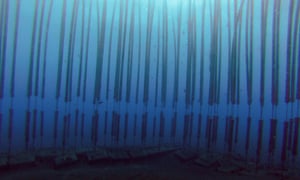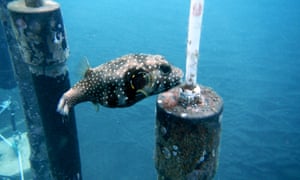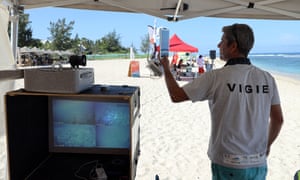In 2017, surf champion Kelly Slater responded on Instagram to the death of Alexandre Naussac, a bodyboarder who died after a shark attack: “Honestly, I won’t be popular for saying this but there needs to be a serious cull,” Slater wrote. “There is a clear imbalance happening in the ocean there … 20 attacks since 2011!?”
Reunion Island, the French overseas department in the Indian Ocean where Naussac died, did indeed see 24 shark attacks between 2010 and 2019, 10 of which were fatal. If anywhere is a shark attack hotspot, it’s here: one-sixth of recorded fatal attacks globally from 2011-20016 happened in the island’s murky water, which appeals to bull sharks but makes it harder to spot them. Overfishing has been cited as another possible reason for the high incidence of attacks, as sharks move nearer land to find food.
Slater later took back his comment – “Killing anything in hopes of a solution is not in line with my philosophies about life” – but shark culling is not a fringe opinion, particularly among surfers who spend so much time in the water. Many scientists, however, see culls as an ineffective way of protecting swimmers: the example often cited is Hawaii, where 4,668 sharks were culled between 1959 and 1976, but the number of attacks stayed the same.
Q&A What is the truth about sharks series?
Show
Hide

Mysterious and often misunderstood, the shark family is magically diverse – from glowing sharks to walking sharks to the whale shark, the ocean’s largest fish. But these magnificent animals very rarely threaten humans: so why did dolphins get Flipper while sharks got Jaws?
Sharks are increasingly considered, like whales, to play a crucial role in ocean ecosystems, keeping entire food chains in balance – and have done so for millions of years. But these apex predators are now in grave danger. The threats they face include finning ( in which their fins are sliced off before they are thrown back into the water), warming seas, and being killed as bycatch in huge fishing operations.
To celebrate our emerging understanding of sharks’ true nature and investigate the many underreported ways in which humans rely on them, the Guardian is devoting a week to rethinking humanity’s relationship with the shark – because if they are to survive, these predators cannot be prey for much longer.
Photograph: Good Wives and Warriors
Like many countries around the world, Reunion put up shark nets to try to prevent attacks around its beaches. But those nets also trap whales, turtles, dolphins and other harmless marine animals – and some shark attacks still occur. It also tried drumlines, which are designed to specifically target sharks using bait hooks; these reduce by-catch, but have been described as culling by another name. It even tried selective bans on swimming and surfing, a key element of the island’s appeal to tourists, which were mostly flouted anyway.

Now Reunion is trying a potential solution that could not only protect people from sharks, but sharks from people. The SharkSafe Barrier, a series of vertical pipes containing magnets designed to look like a kelp forest, has been developed by a South Africa-based team of scientists and shark specialists, who have been working on it since 2011.
The idea came from Dr Craig O’Connell, a marine biologist who went to South Africa to test magnets as deterrents for great white sharks, which are protected there. South Africa had been relying on nets for protection, but at a cost: between 2013 and 2017, nearly 17 great whites died annually in nets and drumlines along the KwaZulu-Natal coast.
Sharks dislike magnets because they overwhelm a special organ of electroreceptors around their eyes and nose, said Dr Sara Andreotti, a marine biologist at the University of Stellenbosch and one of the SharkSafe team.
“They can detect very minute electric fields in the water,” said Andreotti of the sensory organ, known as the ampullae of Lorenzini and also found in rays. “They use it for hunting. Some scientists argue that they are using it for migration as well – they can feel the magnetic field of the Earth.
“We create a magnetic field that is too powerful for them to bear – it overwhelms this sensitive sense. Other species can swim through. They can even use the barrier as an artificial reef.”
The idea to disguise the magnets as kelp came after Michael Rutzen, a white shark behaviour specialist and film-maker, and one of the team, observed that the great whites would not enter areas with thick kelp, presumably to avoid entanglement. (Cape fur seals are often seen darting into the kelp to evade predators.)

The team tested the barrier with bull sharks in the Bahamas and white sharks in South Africa. They set up the pipes and chummed – attracted sharks with fish guts and other parts – then filmed the sharks’ reactions. None of the sharks filmed passed the barrier to get to the fish, Andreotti said.
Two hundred pipes have been installed off Reunion, and the experiment will run until the end of the year. The authorities will then decide whether to replace the nets across the island.
One potential obstacle is cost: one 8m (26ft) section of SharkSafe barrier costs about 4,000 rand (GBP178), which is much more expensive than netting, and the number of pipes required can be in the dozens. Its backers argue that maintenance is cheaper than nets, in part because you don’t need to clean out dead creatures – but net maintenance is also an important source of employment in many deprived coastal communities.
Scientists have been experimenting with magnets as shark repellents for several years. The University of Newcastle, in Australia, published the results of a study that showed magnets can reduce the number of sharks and rays caught as by-catch in commercial fishing.

Magnets are not the only new method being trialled. The Eco Shark Barrier, developed in Perth, Australia, uses a nylon mesh that allows small fish to pass through, but not sharks, and is tightly secured to avoid entangling larger creatures.
Adelaide’s Flinders University has been testing wetsuit material that may reduce blood loss from shark bites, using ultra-high molecular weight polyethylene fibres (UHMWPE). And the Perth-based Shark Attack Mitigation Systems designed a wetsuit in two shades to distort the shape of a swimmer to a shark’s eye.
Personal deterrents also include electrical or magnetic repellents; aerosols packed with an extract of dead shark tissue; and even a device that emits orca calls, based on how white sharks have been observed temporarily abandoning their hunting grounds when orca are present.
And then there is simply trying to spot the sharks before they can pose any trouble. In Australia, the SharkSpotter system is a drone that uses AI technology to detect sharks. And South Africa’s similarly named Shark Spotters warn swimmers about white sharks in False Bay; an exclusion net is also deployed daily (most shark nets are permanent) around Cape Town’s Fish Hoek area. Sometimes, human eyes on the ocean are the best method of all.
Share your thoughts and experiences using the hashtag #sharklife on Twitter and Instagram, and follow our shark series at Guardian Seascape: the state of our oceans